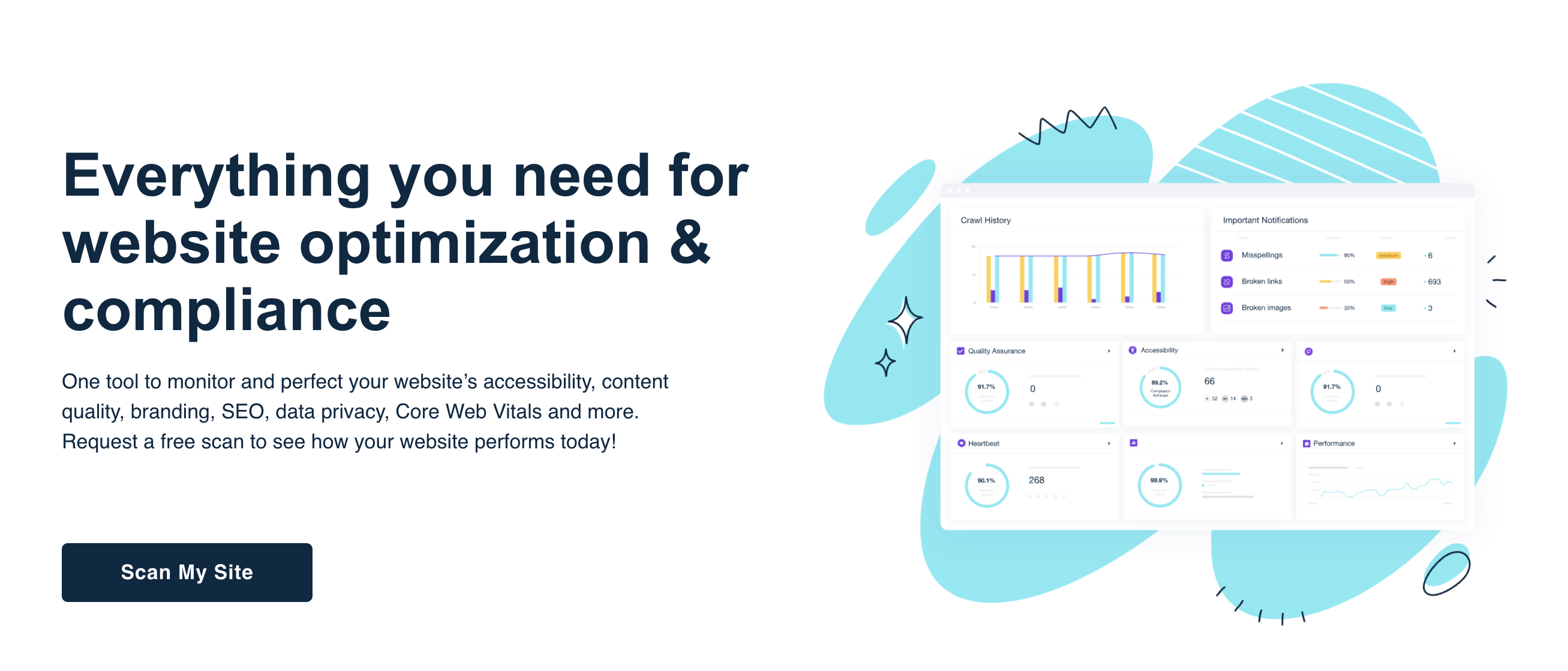Accessibility, on the other hand, is about inclusivity, making sure that content can be used and understood by everyone, including people with disabilities. It not only expands your audience but also demonstrates social responsibility. Moreover, accessible websites tend to rank better on search engines, as many SEO best practices overlap with accessibility principles. Together, these strategies improve user engagement, conversion rates, and ultimately contribute to the success and growth of your organization’s online presence.
Introduction
In this article we’ll look at some key objectives in the content strategy journey such as understanding your audience and setting goals; content planning and organization in Drupal; creating high-quality Drupal content; and finally, measuring success and iterating your strategy.
A content strategy is essential for any modern Drupal site as it aligns content with business goals, optimizes user experience, ensures quality and consistency, and leverages Drupal’s advanced content management features for efficient governance and workflow management. Your organization’s content strategy will incorporate SEO best practices to amplify online visibility and prepare the organization for future digital trends and multi-channel distribution.
2. Accuracy and Trustworthiness: High-quality content needs to be factually correct and reliable. Sources should be credible and verifiable, which helps establish the website as an authoritative figure in its niche.
Understanding Your Audience and Setting Goals
5. Engagement and Interaction: The content should be engaging, fostering interaction, and compelling action. This could mean encouraging comments, shares, or conversions. High-quality content often includes calls-to-action and interactive elements like quizzes or polls.
50,000 modules that you can research and utilize in your site to add to your content management functionality as well as features to help to plan and schedule publication of your content based on your organizations campaign strategies.
Creating High-Quality Drupal Content
In the realm of digital presence, a well-crafted content strategy is the linchpin for success. The key takeaway from our exploration is that tracking and analyzing content performance is not just beneficial; it’s essential. By leveraging industry-standard tools like Google Analytics and Drupal-specific modules, you gain a deep understanding of user engagement and content effectiveness. Delving into analytics with tools like SEMrush allows for SEO fine-tuning, while feedback platforms keep a finger on the pulse of user satisfaction. Embracing continuous improvement ensures that the strategy doesn’t stagnate, adapting instead to the ever-evolving digital landscape and audience expectations.
1. Relevance and Audience Alignment: Content must meet the needs and interests of the target audience. It should be pertinent to their queries and offer tangible value, whether through information, entertainment, or solutions.
Learn to develop an effective content strategy for your Drupal site with expert advice. Drive traffic, engage users, and boost conversions with strategic content planning.
4. SEO Best Practices: Integrating SEO considerations—like keywords, meta titles, and descriptions—enhances content discoverability. When using images, the file name matters, and well-crafted alt attributes should always be used. Always consider that these strategies should be balanced with natural language to maintain quality for the end user.
1. Understand and Address User Intent: Craft content that aligns with what your audience is seeking by conducting keyword research and user surveys. Deliver comprehensive answers to their questions, offer solutions to their problems, and provide unique insights that they can’t find elsewhere.
Implementing these strategies does require effort and dedication, but the payoff is substantial. With commitment and the right tools in hand, your organization’s web content can not only reach but resonate with your intended audience, propelling your digital goals forward. Remember, each piece of content is an opportunity to engage, convert, and delight users, ultimately creating a robust, dynamic online presence.
3. Clarity and Readability: Content should be written clearly and concisely, with an appropriate reading level for the audience. Good use of headings, subheadings, and bullet points can improve comprehension and scanner-friendliness.
When creating your content strategy and the new content itself, always keep in mind SEO and Accessibility. SEO and Accessibility are critical pillars in your content strategy because they ensure your content reaches the widest possible audience and complies with best practices and legal standards. SEO increases the visibility of your content on search engines, drawing more traffic to your site and connecting your content with users actively searching for information or services your site offers.
Some tried and tested techniques for creating engaging content are:
Identifying the target audience for your organization’s web application is a crucial step because it informs the design, functionality, content, and marketing strategy, leading to a more successful product. There are several ways in which your team can systematically identify the target audience.
Work with your creative and technical teams to establish content quality standards. Some of the most important considerations are:
Ultimately, a well-crafted content strategy is a linchpin in transforming a Drupal CMS into a dynamic asset that supports engagement, lead conversion, and customer loyalty, thus driving an organization’s digital success.
SEO and Accessibility
For those seeking further guidance in refining their Drupal content strategy, professional help is just a step away. Your Account Manager is equipped to provide targeted advice and support, and services like Acquia Professional Services offer a higher level of expertise, with comprehensive solutions tailor-made for your content needs. With these resources at your disposal, the path to a successful content strategy becomes clearer, imbued with expert insights to bolster your efforts. Investing in content strategy is investing in the future of your organization—meticulous, yes, but well worth it over time for the measurable impact on your organization’s growth and success.
The pathway to continuous improvement in content strategy lies in iterating based on a blend of performance data and user feedback. For a data-driven approach, tools like Tableau or Google Data Studio can help in visualizing performance trends and crafting narratives out of data, facilitating strategic decisions. The GatherContent platform can assist in managing the workflow of content updates and implementing refinements. Collecting user feedback through surveys, using tools like SurveyMonkey or Qualaroo, can also provide direct insights into user satisfaction and areas for improvement. This cycle of review, analysis, and update enables a content strategy that evolves with your audience’s needs and the shifting digital landscape.
VWO can further refine your content approach by revealing what resonates best with your audience. Data analysis involving user engagement metrics such as conversion rates, time spent on page, and bounce rates helps identify which pieces of content are performing well or need optimization.
Image

Continuous Improvement: Updating and Refining the Content Strategy Based on Performance Data and User Feedback
6. Visual Quality and Presentation: Ensure digital media—such as images, videos, and infographics—used in the content are of high resolution, suitable for high-definition displays. Clear and professionally presented visuals enhance user engagement and contribute to a positive perception of your content’s overall quality.
Conclusion
High quality content – words, styles, and digital media included – are not only critical to an engaging, branded user experience on your organization’s site, but they are part of the modern algorithms used by Google and other popular search engines to rank results for SEO.
2. Employ Storytelling Techniques: Use a narrative approach to make your content more relatable and memorable. Stories can evoke emotions, create connections, and make complex information more digestible. Incorporate real-life examples, case studies, and testimonials to add depth and credibility.
3. Interactive and Multimedia Elements: Integrate interactive features like quizzes, polls, and infographics, along with multimedia elements like videos and podcasts. These can increase user engagement, making the content not only informative but also enjoyable to consume.






